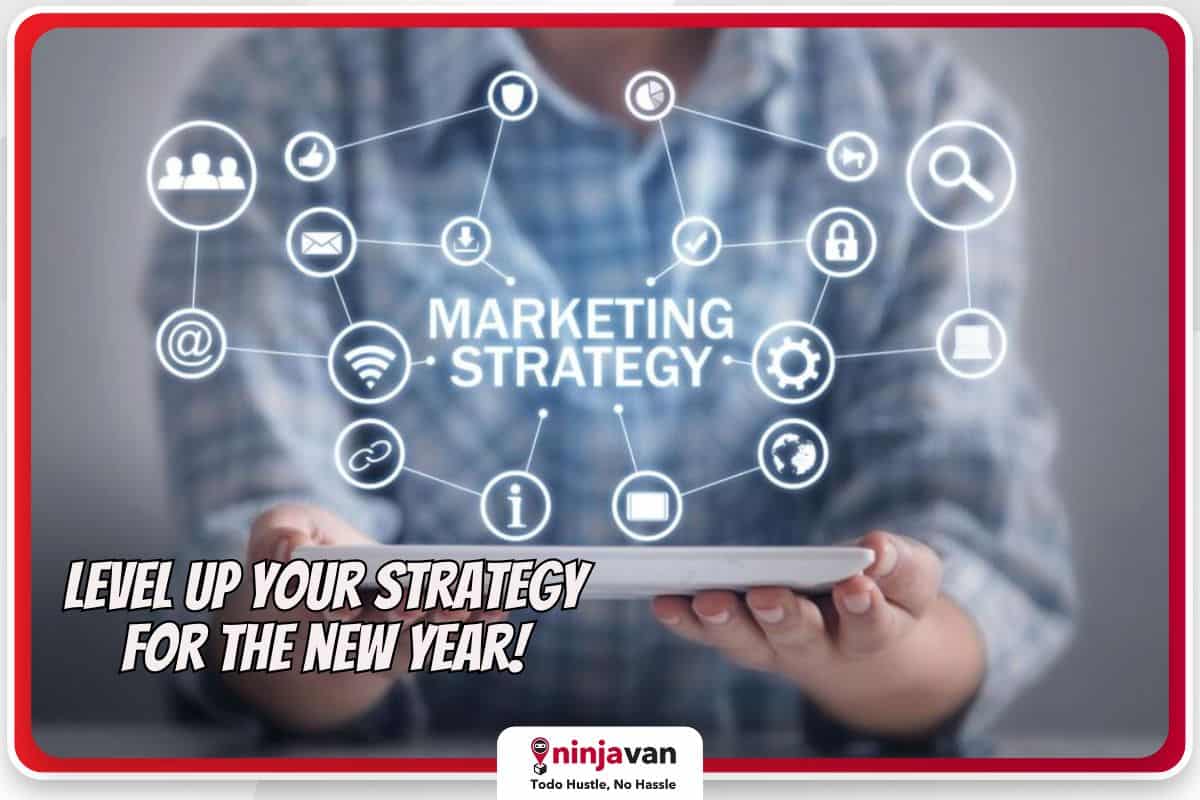The Christmas selling season may have given you big sales and profits compared to any other month in the year. But it also showed you just how tough the competition is that you had to poach for every customer you can find online,
Now comes the bigger challenge for the New Year: What can you do to attract more spending customers, increase sales, beat the competition, and do even better next holiday season?
One good strategy is multi-channel marketing.
What is multi-channel marketing?
Multi-channel marketing is all about using multiple channels to connect with your audience and promote your products or services. It’s like spreading your net wide to catch more fish, but in the world of marketing!

It involves creating a cohesive experience for customers by maintaining a presence and consistency across these different channels — social media, email, websites, or physical stores — to engage and convert them into customers.
Here’s how it works:
- Imagine all the different ways you come across information or products. social media, email, ads, websites, in-store displays, even word-of-mouth. Multi-channel marketing takes advantage of those diverse channels to reach your target audience wherever they spend their time.
- Think of it as a buffet instead of a single dish. You offer your audience the same message or campaign, but presented in different ways and tailored to each channel’s strengths. For example, a funny video on TikTok might be very different from a detailed product comparison on your website.
- The key is to create a cohesive experience across all channels. If someone sees your ad on Instagram, then clicks on a link in your email, and finally visits your store, all those touchpoints should feel connected and seamless.
Also read: Social Media Metrics You Should Be Monitoring
What are the benefits of multi-channel marketing?
Here are some benefits of using multi-channel marketing to promote your business and reach more customers.
- Increased reach. You can reach more potential customers by being present on multiple platforms.
- Stronger brand awareness. The more touchpoints you have, the more familiar your brand becomes to your audience.
- Improved customer engagement. Different channels cater to different preferences, so you can create personalized experiences for your audience.
- Boosted sales and conversions. A well-executed multi-channel campaign can lead to higher conversion rates and ultimately, more sales.
- Of course, multi-channel marketing can also be challenging. It requires careful planning, coordination, and management to ensure consistency and avoid confusing your audience. But done right, it can be a powerful tool to grow your business and build lasting relationships with your customers.
#NinjaTip: Your ecommerce business needs the right delivery partner. Get the best ecommerce shipping with dedicated account management, big rebates, No RTS fees, and fast COD remittances when you Sign up for a Ninja Van VIP Shipper account!
8 steps to creating your multi-channel marketing strategy
Creating a multi-channel marketing strategy involves planning, research, and a bit of creative thinking. Here’s a step-by-step guide to help you build a winning strategy for a strong new year!
1. Define your marketing goals
- What do you want to achieve? Increase brand awareness, drive sales, generate leads, etc.
- Set SMART goals: Specific, Measurable, Achievable, Relevant, and Time-bound.
2. Understand your target audience
- Who are you trying to reach? Create detailed buyer personas with their demographics, interests, online behavior, and pain points.
- Research their preferred channels and content formats.

on the right channel.
3. Choose your channels
- Identify the channels where your target audience spends their time. Popular options include social media, email marketing, search engine marketing (SEM), content marketing, paid advertising, and even offline channels like direct mail or events.
- Start with 2-3 channels initially and scale up later as you gain experience.
4. Develop your brand messaging
- Craft a clear and consistent message that resonates with your target audience. This should be the core of your campaign across all channels.
- Develop a brand voice and tone that aligns with your brand personality.
5. Plan your content strategy
- Create diverse content formats suitable for each channel. Consider infographics, blog posts, videos, social media posts, email newsletters, etc.
- Tailor your content to each channel’s specific requirements and audience preferences.
- Develop a content calendar to schedule your posts and ensure consistency.

6. Integrate your channels
- Create a seamless customer journey across all touchpoints. For example, use social media to drive traffic to your website, then retarget website visitors with email campaigns.
- Utilize cross-channel marketing tactics like retargeting, drip campaigns, and cross-posting to engage your audience effectively.
7. Implement and track your campaign
- Set a budget and allocate resources efficiently.
- Use marketing automation tools to streamline your workflow and manage your campaigns across channels.
- Track and analyze key metrics for each channel, such as engagement, reach, conversion rates, and ROI. Use this data to optimize your campaign performance and refine your strategy.

your strategies’ success!
8. Stay informed and adapt
- Keep up-to-date on the latest marketing trends and adapt your strategy accordingly. New platforms and technologies emerge constantly, so be willing to experiment and embrace change.
- Regularly review and evaluate your campaign’s performance. Make adjustments as needed based on your findings and learnings.
Additional tips for your multi-channel marketing campaign
Creating a successful multi-channel marketing strategy takes time and effort, but it can be incredibly rewarding. Here are a few more tips to make sure your multi-channel marketing efforts will be successful throughout the year:
- Focus on providing value to your audience. Create content that educates, informs, or entertains them.
- Personalize your marketing messages whenever possible. Speak directly to your audience’s needs and interests.
- Build relationships with influencers and partners in your industry. Leverage their reach and expertise to amplify your message and reach more audiences.
- Don’t be afraid to experiment and test different approaches. There is no one-size-fits-all solution in marketing, so find what works best for your brand and audience.

business ahead of your competition.
Follow these steps and stay committed to your goals. Soon you can build a powerful multi-channel marketing strategy that reaches your target audience, drives results and takes your brand to the next level.
Finally, choose Ninja Van for all your shipping and logistics needs! We provide end to end and customized logistics solutions for businesses of all sizes so you can streamline your operations and focus more on growing your business.
Discover how Ninja Van can optimize your business for growth!
More Marketing tips to boost your business:
Boost Sales by Diversifying Your Sales Platforms
B2B vs. B2C Social Selling
A Complete Guide to Social Media Marketing






